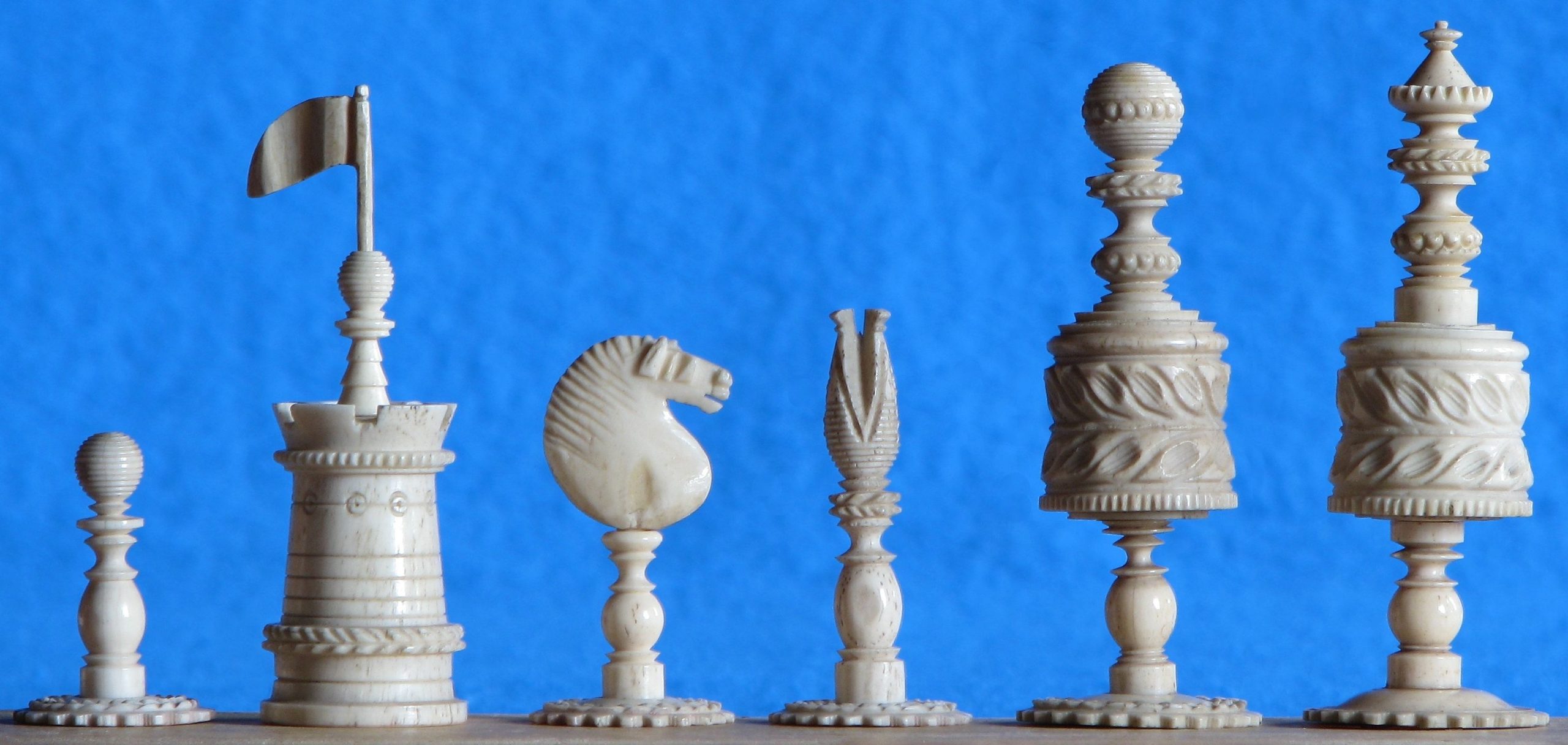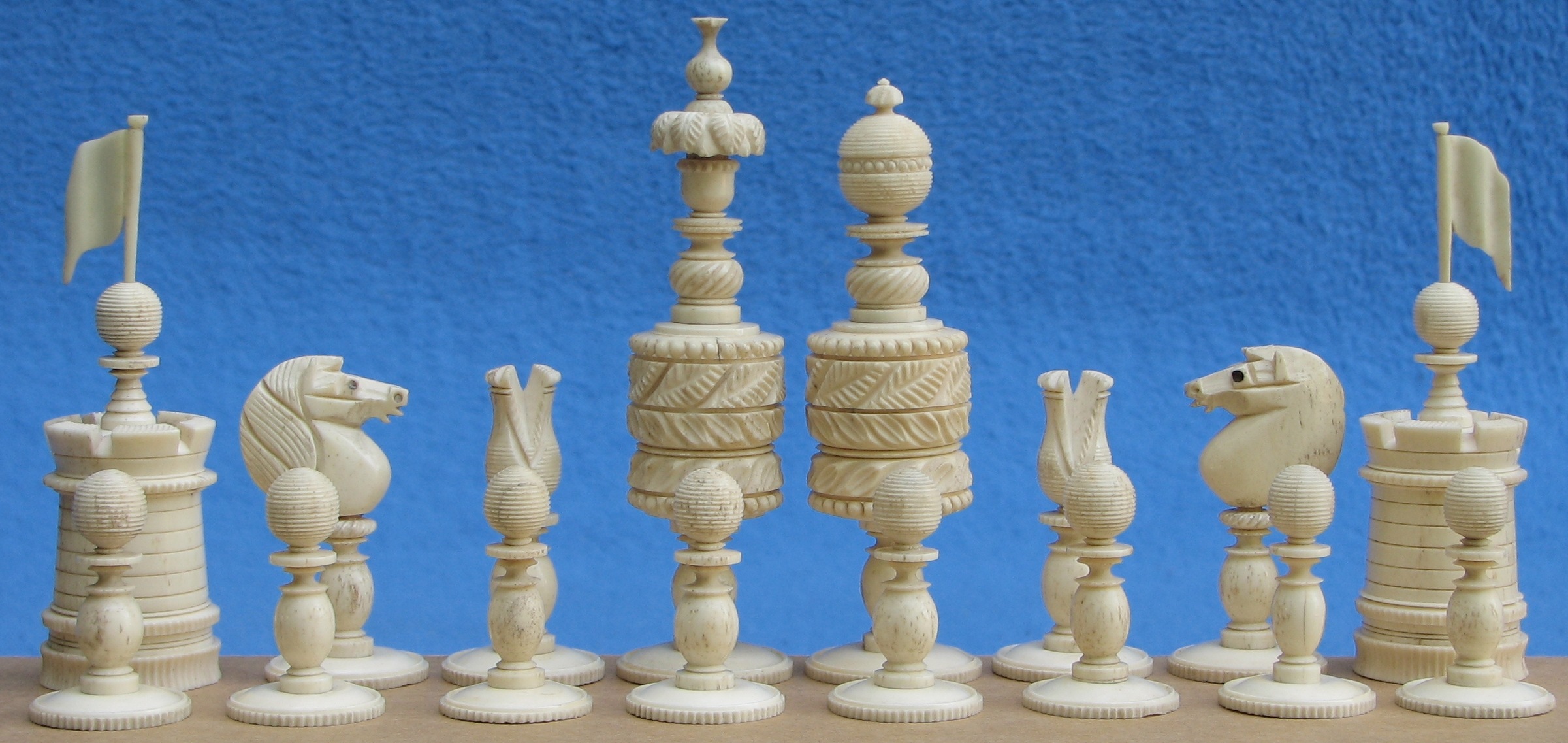'Barleycorn'
Definition of Barleycorn sets. English ‘Barleycorn’ sets are so-called because of the corn grain decoration on the main pieces. Sometimes, the grain is combined with another motive like leaves or pearls. Other characteristics, mo2stly seen, are cogged round based, reeded balls, fat King and Queen, fat Rook with finial and flag, Bishop with a deep slit and a round Knight.
What are not Barleycorn sets? Decorated sets with other motives, like leaves only, acanthus, ropetwist, etc are often mistakenly called Barleycorn. This is also the case with undecorated sets. Even German Nuremberg sets, with the same overall appearance, are often misjudged as English Barleycorn.
Production of Barleycorn sets started around 1820. It is said that the introduction of the Holtzapffel lathe made the repeated grain decoration possible, but that machines can make only a defined number of repetitions and we count non-matching numbers. The end of production is less clear, but possibly production lasted until the end of the 19th century. The company F.H. Ayres, founded in 1864, made Barleycorn sets, but it is unclear when they ended their production line.
Most Barleycorn sets are made of bone, but ivory sets exist as well. It is unclear whether wooden sets exist at all. Overall, Barleycorn sets are not as common as many think.



